Amine Afellous
The Cossacks (1928) by George W. Hill and Clarence Brown : from the conquest of the West to the conquest of the Caucasus.
This article concerns the 1928 film "The Cossacks" directed by George W. Hill and Frances Marion. This adaptation of Tolstoy’s novel about the Terek Cossacks has the peculiarity of adapting the codes of the epic western of the 1920s to the image of the Cossack, perceived as an oriental barbarian by the American public of the time. Through our analysis, we will see how this film transposes the universe of the epic western to the subject of the Cossacks. We will also see how the film transposes the confrontation between pioneers and Indians, civilization and barba-rity, through the war between the Cossacks and Turks. Finally, we will see that the film is also influenced by the film of the Russian fashion carried by white immi-gration to the West after the Russian revolution. This is why the film is full of sometimes clumsy references to the Russian world and the time of the tsars. We will see that they distract the American viewer even if some references may seem obscure to him.
Simon Albertino
Literary Fairy Tales in Russian Romanticism : the Boundaries of Genre
Many Russian Romantic authors used to write their own fairy tales. The most famous one is probably Pushkin, whose tales are still present nowadays in schools and libraries. Some of other authors got inspired by Russian folk tales and used the same characters, magic items or creatures, while others created completely different stories. Finally literary fairy tales took completely different forms, and finding a definition of the genre itself proves to be challenging. Today, Russian folklorist studies aim at finding the origins of all those literary fairy tales to determine whether they are based on Russian or foreign, namely German. folk tales. The boundary between literary fairy tales and folk tales thus appears as crucial in the process of understanding the genre and defining it. However relying too much on the origin of those tales can be misleading, because the story itself is put aside and often forgotten. What role does the boundary between folk tales and literary fairy tales actually play ?
Marie Bonin
Russian Fantastika : an itinerary between borders
This article retraces the itinerary of Russian fantastic literature, from the end of the Soviet Union, dominated by science-fiction, to the present time, where fantasy has outweighed all other types of Fantastika. In a further mutation, Russian fantasy seems to have become less of a literary genre, turning into a multi-support cultural production where books are no longer the original and can become the adaptation - of video games, or TV shows. Studying this constantly evolving process, one comes across a number of global phenomenons - the popularity of book series, the increasing importance of numerical forms in the literary world - as well as some tendences which seem to be specifically post-soviet - the rapid decline in prestige of literature in these regions, the end of “literaturocentrism”, can be associated with the complete blurring of the borders between different supports of the same fantasy universes, as shown through the example of the 2005 bestselling novel Metro 2033.
Alena Chumak
At the Edge of the Human : Animality in the Russian Prose at the Turn of the Twentieth Century.
The article focuses on the notion of animality in the context of the humanist conception in Russian literature prose at the turn of the 20th century. Since the second half of the 19th century, the literary function of the animal figure has changed : it’s no longer a personification of social critic but rather a constituent element of the human portrait. The interest towards the animality grows as far as the Silver Age writers search for a new model of the Human self. Animality has been a crucial reference point for defining the boundaries between the human and animal. The semantical diversity of the animal figures provides a wide range of interpretations of what the “interior beast” is. Through the analyses of the animalistic descriptions, this paper explores the ways human/animal frontier has been interpreted in the Silver Age literary context.
Sergei Fediunin
“Civilized Russia” vs. the “Nation of Slaves” : Elitist Mythologies and Construction of Social and Moral Boundaries in Early 21st Century Russia
The article focuses on the reproduction of a discourse opposing a liberal, “civilized” and pro-European minority to “the people”, disdained as archaic, uncivil and hostile to liberal values in contemporary Russia. In the context of increasing marginalization and blatant stigmatization of liberalism in the Russian public sphere, I distinguish two key moments when this elitist discourse reached his peak : first, during the 2011-2012 anti-government mass protests and, second, in the aftermath of the 2014 Ukrainian revolution followed by the annexation of Crimea by the Russian Federation and an armed conflict in the Donbass region. I argue that the symbolic barbarization of the “popular masses” not only stems from the intelligentsia’s aspirations to affirm its social status, but also serves as a tool to blame the alleged “slavish mentality” of the majority of Russians for the failure of post-Soviet democratic transition and/or the unpopularity of the liberal agenda. In conclusion, I speculate that this discursive strategy is deeply counter-productive since it reinforces the image of Russian liberalism, backed by the official political discourse, as an “anti-popular” or “anti-national” ideology and drives the Russian liberal-minded public to despair.
Sonia Gavory
The Heron in Chaillot : a border crossing illustrating the fruitful relations between Antoine Vitez and Russia
In 1984, Antoine Vitez directed in Chaillot national Theatre, for the first time in France, The Heron by Vassili Axionov in parallel with the more well-known play The Seagull by Anton Tchekhov. Through this diptych, Vitez critically investigates the history of Twentieth-Century Russia. In line with his long political commitment, the artist records the disappearance of the communist ideas - not without expressing his own disappointment. Staging The Heron is thus for Vitez the opportunity to stress the best aspects of Russia : its enlightened and cosmopolitan spirit, driven by innovative artists who create new literary and theatrical forms to describe the world in which they live. Axionov’s unmistakable language transcends the style and genre boundaries and provides rich ground for Vitez’s own artistic explorations. Inspired by Meyerhold’s grotesque theatre, Vitez combines on stage lyricism, burlesque, and fantasy. This entanglement of styles dismantles the classical borders between registers in order to reflect the ambiguities of a Russia that is altogether criticised and loved.
Julie Gerber
Sergei Lebedev’s Oblivion : a crossing of the Styx
The writer Sergei Lebedev is interested in vaste spaces : as a former geologist, he many years explored the Far North. In his first novel Oblivion (2011), he also reflects on the boundaries between times. This novel represents an attempt to rescue history from the brink of oblivion. The story takes place in the 1980’s and continues after the dissolution of Soviet Union. The anonymous narrator, a young man, talks about his ambiguous relationship with his adoptive grandfather called Grandfather II, who died to save his life. Long after this event, he decides to investigate his past and embarks on a journey to the North. There, he understands that the enigmatic old man used to be the head of a Gulag camp. This is an opportunity for the hero, as a « memory’s heir », to uncover the truth about the past : the repressions as well as the silence that followed. The first part of this article considers the narrator’s experience of sensitive boundaries : geographic, temporal and linguistic. The second part is devoted to the Gulag as an unsustainable in-between, where life is similar to death. In the third part, we will see that the narrator builds a hybrid identity to travel between times. Thus, he recalls the figure of Charon, the ferryman of Hades who carries souls of the newly deceased across the rivers Styx. The narrator, though, attempts to bring death people to life throught his writing.
Anastasia Kozyreva
Book as a Frontier : between the literary Space and the Artistic Space. The example of Mikhail Lermontov’s “The Demon” Illustrated by Mikhail Vrubel
The parallelism between Mikhail Lermontov’s poem “The Demon” and the art of Mikhail Vrubel seems to be a well-studied theme in the historiography of Russian literature. Nevertheless, the artistic cooperation between the writer and the painter is often considered from the point of view that Vrubel’s art is influenced by Lermontov’s writings. By analyzing the term of “space” in art, literature and book edition, this article aims to trace how the critics and the editorial work participate into erasing the limits between the literary and the pictorial works. Furthermore, this study shows how the physicality of the book as a space that embraces text and illustrations creates a place for a dialogue between two arts and let a new piece of art be born.
The Shtetl as crossroads in Julius Margolin’s Eight Stories About Childhood
In his unfinished autobiography Eight Stories About Childhood, Julius Margolin, who emigrated in Palestine in 1936, comes back to his childhood spent in various towns and shtetls of the Russian Empire in the years 1900-1910. These towns, situated at the fringe of the Empire, bordering the Austro-Hungarian Empire and Germany, are at the crossroads between different communities, languages, religions and cultures. Coming from a Russian-speaking Jewish family, constantly moving from town to town, Julius Margolin brings an external gaze at these towns and the communities, both Christian and Jewish, that inhabit them. He depicts these towns both as contact zones between different populations and as mirrors of the transition from the 19th to the 20th century. Whatsmore, these towns are also a window into another, more central world for the young Julius Margolin, which he hopes to enter and explores through his imagination.
Tatiana Nikitina
The Caucasus in Charles-Louis Didelot’s ballet : limits of one work
The French ballet master, Charles-Louis Didelot (1767-1837), had a long career in the Russian Imperial Theaters during the period 1801-1831. He is also considered to be one of the first choreographers to take an interest in Russian poems and texts for ballet’s composition. In the panorama of his performances, “The Prisoner of the Caucasus or the Shadow of the Bride” created in 1823 sparks a great interest. This work, inspired by Alexander Pushkin’s poem, introduces a dialogue between Russian literature and ballet. The objective of this article is to explore the boundaries and relationships between the literary text and the choreographic work, as well as to analyze the presentation of the Caucasian imagination in a ballet. The study of “The Prisoner of the Caucasus” demonstrates the adaptation of certain rules of choreographic conversion. The literary digression and the introduction of new elements into the ballet bring into light a change in aesthetics that foreshadows the arrival of romanticism. In addition, it shows for the transposition of the Tsarist dogmas imposed on the theater. It is therefore important to shed light on the study of choreographic practices in the 19th century in Russia by taking into account its political system and socio-cultural context.
Anna Sidorevich
Leningrad Women’s Movement (1979-1982) : a Phenomenon that Exceeds the Limits
The Léningrad women’s movement was founded in 1979 by four women-representatives of the so-called “second” culture of Léningrad with the samizdat publication of the almanac “Woman and Russia”. The KGB persecutions followed immediately, and Léningrad feminists had to change the form of their publication. The samizdat revue “Maria” was published in 1980, but it distinguished itself from the almanac by a strong spiritual and religious tendency. However, the feminists’ publications remained rather marginal in the milieu of the non-official Léningrad culture. In 1979, the almanac was transferred to France via the French consulate in Léningrad, and it immediately found itself within the context of the western feminism of the second wave. Translated and published in Paris by the publishing house Éditions des Femmes, the Léningrad women’s samizdat did not succeed in meeting symbolic criteria of a feminist publication and was rejected by the French feminist community. The present article aims at analyzing the crossing of the geographical borders as well as the exceeding of symbolic limits by the phenomenon of the Léningrad women’s movement (1979-1982).
Kateryna Tarasiuk
Spaces of pain as Places of imprisonment of the female body in Russian feminine prose from the end of the twentieth century
The Russian feminist prose of the 1980s and 1990s marked literary current events by exposing the biological and physiological processes of the female body, which had long remained taboo subjects in the Soviet cultural and social space. When the female body is shown, it is difficult not to see the violence done to it. The female body represents a surface on which several traumatic experiences (abortions, childbirth) are inscribed. Once placed in the spaces of pain, these bodies are detained and dominated by doctors. To illustrate this point, we will study the following three works : The Sexopathology [Сексопатология] (1993) by Olga Tatarinova, The Service for the lost [Отделение пропащих] (1991) and Poplar Down Day [День тополиного пуха] (1991) by Marina Palei. The objective is to observe the forms of expression and the processes of discourse elaborated by the authors to expose the suffering of the bodies. By analyzing these processes we would like to finally arrive at the following question : Does the suffering body become a detained body, once placed in the spaces of pain ?
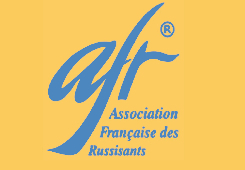



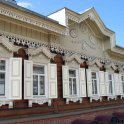


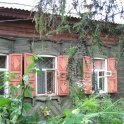

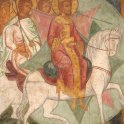

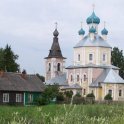

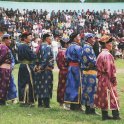



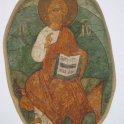

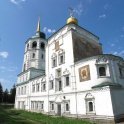

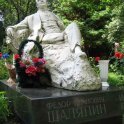

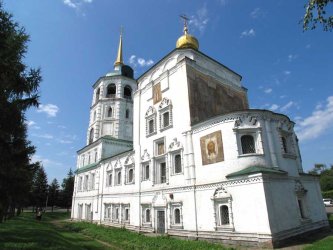
 Sommaire
Sommaire